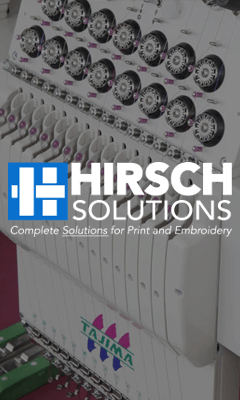How do you get employee buy-in on projects and spend less time doing everything yourself? This is a common issue for screen print shop owners and one we covered in this Shop Talk featuring Ali Banholzer of Spirit Warehouse. Rick dove into the world of effective project management with Ali, a seasoned shop owner and a Lean Six Sigma practitioner. She shared her innovative approach to enhancing efficiency and quality in her shop through strategic delegation and structured project management.
Understanding Lean Six Sigma
Ali’s methodology revolves around Lean Six Sigma, a business strategy that leverages data, statistics, and analytics to refine systems and processes. The ultimate goal? To improve efficiency and quality while ensuring that your customers are willing to pay for those enhancements. This approach allows shop owners to focus on what truly matters without stretching themselves too thin.
Getting Employee Buy-In
One of the primary challenges in implementing any new system is gaining employee buy-in. Ali emphasizes the importance of clearly defined job descriptions, which outline expectations from the get-go. Additionally, she implements an incentive program using “monopoly money.” Employees earn this currency based on their performance and can exchange it for gift cards or other rewards. This fun twist keeps motivation high while fostering accountability.
Brainstorming and Project Selection
Ali’s team kicks off each quarter with a brainstorming session. The process begins with a simple yet effective question: “What’s broken?” This round-robin style allows every employee, from the most junior to management, to voice their concerns. The ideas are then documented, voted on, and prioritized, ensuring everyone has a say in the projects they’ll work on.
Project Management Structure
Each employee selects a project to tackle over the quarter, typically requiring about one hour of work per week. By the end of the quarter, that adds up to a significant investment of time—15 to 20 hours—without the owner having to manage those tasks directly. This system not only empowers employees but also fosters a sense of ownership and pride in their work.
Incentives and Recognition
Ali incorporates unique incentives, such as little model airplanes awarded upon project completion. This quirky recognition system helps build a sense of accomplishment and camaraderie within the team. Employees also receive “army men” for supporting their peers on projects, creating a visual representation of their contributions.
Challenges and Adaptations
Ali notes that it took about two quarters for her team to fully embrace this new way of working. Initially, some employees were skeptical about the rewards and the process itself. However, as they began to see tangible improvements in their workflow and a reduction in workplace hassles, their enthusiasm grew.
Keeping Teams on Track
To ensure accountability, Ali holds weekly check-ins during staff meetings where employees report on their project progress. This structure not only keeps everyone on task but also provides a platform for discussing any roadblocks they might encounter. If an employee struggles to complete their project, they can seek help from their peers, fostering teamwork and collaboration.
Types of Projects
The projects vary widely, from documenting standard operating procedures (SOPs) to evaluating new software solutions for shipping. Ali mentions that many initial projects focused on creating SOPs to ensure consistency and quality across the board. As the team became more comfortable with the process, they tackled more complex projects, like integrating software APIs for improved operations.
Results of the Initiative
Two years into this approach, Ali reports significant benefits. Employee retention has improved, training costs have decreased, and the efficiency of project completion has skyrocketed. By delegating tasks to her team, Ali has more time to focus on strategic business challenges and high-level customer interactions.
Conclusion
Ali Banholzer’s innovative project management strategies demonstrate the power of Lean Six Sigma in a screen printing environment. By empowering employees, encouraging collaboration, and maintaining a structured approach, shop owners can transform their operations, leading to increased productivity and employee satisfaction. As Ali aptly puts it, when employees have a voice in the process, not only do they fix problems, but they also make their own jobs easier.


Comments